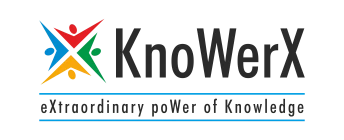Mastering Demand Forecasting in Supply Chain: Top Importance, Techniques, and Benefits

Definition of Demand Forecasting: Demand forecasting involves the process of estimating future customer demand using historical data, market research, and statistical methods. This helps businesses make informed decisions regarding production, inventory, and supply chain activities. Effective forecasting is essential to avoid unexpected stockouts or overproduction, ensuring balanced operations.
Importance of Demand Forecasting in Supply Chain Management (SCM): In SCM, demand forecasting plays a crucial role by driving key supply chain functions, from procurement to distribution. It helps businesses plan better, reduce uncertainty, and align resources efficiently. Without accurate forecasting, companies risk misalignment between supply and demand, leading to wasted resources or missed sales opportunities.
How accurate forecasting influences business efficiency and customer satisfaction: Accurate demand forecasting enables businesses to streamline operations, reduce operational costs, and ensure timely delivery of products. It also allows for proactive management of supply chain disruptions. By anticipating customer needs, companies can enhance satisfaction by meeting expectations with minimal delays or stockouts.
The Role of Demand Forecasting in Supply Chain
2.1 Optimizing Inventory Management: Demand forecasting helps businesses maintain optimal inventory levels by anticipating future needs. It prevents both stockouts, which can lead to lost sales, and overstock situations, which tie up capital and increase storage costs. This balance reduces waste and ensures that inventory moves efficiently, minimizing holding costs.
2.2 Enhancing Supplier and Manufacturer Relationships: Accurate forecasts allow companies to synchronize their production schedules with suppliers, ensuring timely procurement of raw materials and production inputs. This fosters a collaborative relationship between suppliers and manufacturers, leading to improved communication, trust, and fewer disruptions in the supply chain.
2.3 Improving Order Fulfillment: Demand forecasting directly impacts the ability to fulfill customer orders on time, enhancing customer satisfaction. By predicting demand accurately, businesses can reduce lead times, optimize delivery schedules, and minimize the risk of stockouts or late deliveries. This results in smoother order processing and better customer service.
Types of Demand Forecasting in Supply Chain
3.1 Qualitative Forecasting: Qualitative forecasting relies on expert opinions, surveys, and market research to predict demand, especially for new products or markets without historical data. It is particularly useful in situations where quantitative methods are not viable. This method incorporates insights from market trends and industry knowledge to provide a more intuitive forecast.
3.2 Quantitative Forecasting: Quantitative forecasting uses statistical methods such as time-series analysis, regression models, and machine learning algorithms to predict demand based on historical data. These methods provide objective and data-driven insights, making them highly reliable for established products and markets. They can also be scaled to analyze large datasets for more precise forecasting.
3.3 Collaborative Forecasting: Collaborative forecasting involves input from multiple departments—such as sales, marketing, and operations—to create a more accurate forecast. Through a process like Sales and Operations Planning (S&OP), businesses can align their forecasts with cross-functional objectives, improving the overall accuracy of demand predictions and fostering interdepartmental cooperation.
Techniques for Demand Forecasting
4.1 Moving Averages: Moving averages calculate the average demand over a set time period to smooth out fluctuations and provide a stable forecast. This technique is simple and effective for identifying general trends, especially in markets with consistent demand patterns. It can help businesses avoid reacting to short-term demand spikes or drops that could skew production planning.
4.2 Exponential Smoothing: Exponential smoothing is a forecasting technique that assigns greater importance to more recent demand data. This makes it more responsive to current market conditions or emerging trends. It is especially effective in dynamic markets where demand patterns shift frequently, allowing businesses to adjust forecasts quickly to reflect these changes.
4.3 Seasonal Indexes: Seasonal indexing adjusts demand forecasts based on seasonal variations, such as increased sales during holidays or slow periods in off-seasons. By recognizing these predictable fluctuations, businesses can better plan for peak and low-demand periods. This technique is vital for industries where demand is cyclical, like retail or tourism.
4.4 Machine Learning and AI: Advanced techniques like machine learning and artificial intelligence enable companies to identify complex patterns and trends in large datasets. These technologies can automatically adjust forecasts based on real-time data and emerging trends. This capability makes machine learning models highly adaptive, offering significant advantages in fast-paced or highly volatile markets.
Challenges in Demand Forecasting
5.1 Data Inaccuracy: Forecasting relies heavily on accurate and reliable data. When data is incomplete, outdated, or incorrect, the forecast can lead to poor decision-making. Businesses need to ensure data quality by implementing robust data collection and management systems to minimize errors and improve forecasting precision.
5.2 Market Volatility: External factors such as economic shifts, consumer behavior changes, political instability, and global events (e.g., pandemics) can create volatility in demand, making it difficult to predict. Companies must be agile in their forecasting approach to account for these unpredictable changes and adjust their strategies accordingly.
5.3 Lead Time Variability: Variations in lead times—how long it takes for goods to be delivered—pose challenges for accurate forecasting. Unexpected delays in production or shipping can disrupt the supply chain and cause discrepancies between forecasted and actual demand. Reducing lead time variability requires closer collaboration with suppliers and improved logistics management.
5.4 Over-reliance on Technology: While advanced technologies can improve forecasting accuracy, over-reliance on them without human oversight may lead to errors. Human judgment remains important, especially in interpreting results and accounting for unique market conditions that algorithms may overlook. A balance between automation and human input is key to successful forecasting.
Best Practices for Effective Demand Forecasting
6.1 Utilizing Real-Time Data: Real-time data allows businesses to make timely adjustments to their forecasts as new information becomes available. It enables companies to respond more quickly to shifts in demand, minimizing the impact of forecast errors. Incorporating real-time data also helps align forecasts with current market trends and customer behavior.
6.2 Implementing Cross-Functional Collaboration: Effective demand forecasting requires input from multiple departments such as sales, marketing, and finance. Collaboration ensures that all aspects of the business are considered in the forecast, resulting in more accurate and actionable predictions. Cross-functional teams can provide diverse insights that refine forecasting strategies.
6.3 Continuous Monitoring and Adjustment: Demand forecasting is not a one-time process but requires continuous monitoring to adjust for new data and market developments. Feedback loops, where forecasts are compared to actual outcomes, allow businesses to learn from past performance and refine future forecasts. Regularly revising forecasts ensures they remain relevant and accurate.
Benefits of Accurate Demand Forecasting in Supply Chain
7.1 Cost Reduction: Accurate forecasting helps companies minimize holding costs, avoid unnecessary production, and optimize labor and transportation resources. By reducing excess inventory and preventing stockouts, businesses can significantly cut costs associated with storage, wastage, and emergency procurement, leading to better financial performance.
7.2 Improved Customer Service: Meeting customer demand on time results in fewer delays, backorders, or stockouts, enhancing customer satisfaction. Accurate forecasting enables companies to align supply with demand, ensuring that customers receive their products when expected. Satisfied customers are more likely to return, contributing to brand loyalty and long-term success.
7.3 Enhanced Flexibility and Responsiveness: Companies with accurate demand forecasts can quickly adapt to market changes, whether it’s a sudden surge in demand or a slowdown. This flexibility allows them to adjust production, inventory, and supply chain strategies in real-time, making them more competitive in dynamic environments. Flexibility also improves resilience to supply chain disruptions.
Frequently Asked Questions
What is demand forecasting?
Demand forecasting is the process of estimating future customer demand using historical data, market research, and statistical methods. It helps businesses plan production, manage inventory, and align supply chain activities.
Why is demand forecasting important in supply chain management (SCM)?
Demand forecasting is crucial for SCM as it helps reduce uncertainty, optimize resource allocation, and balance supply with demand. Accurate forecasts prevent stockouts, overproduction, and wasted resources.
How does accurate demand forecasting improve business efficiency?
Accurate forecasting streamlines operations, reduces costs, ensures timely product delivery, and enhances customer satisfaction by meeting demand without delays.
What challenges do businesses face in demand forecasting?
Key challenges include data inaccuracy, market volatility, lead time variability, and over-reliance on technology. Businesses need to balance automation with human judgment and continuously monitor their forecasts.
How can companies improve their demand forecasting accuracy?
By using real-time data, fostering cross-functional collaboration, and continuously monitoring and adjusting forecasts based on actual outcomes, companies can enhance their forecasting accuracy.
End Notes

demand forecasting plays a critical role in enhancing the efficiency, agility, and profitability of supply chains. By leveraging accurate forecasting techniques, businesses can optimize inventory management, improve supplier relationships, and meet customer demands with greater precision. The challenges of market volatility, data accuracy, and lead time variability can be mitigated through the implementation of advanced forecasting tools and collaborative approaches.
For professionals seeking to deepen their understanding of demand forecasting and other essential supply chain functions, KnoWerX, a leading institute in Supply Chain Management, offers industry-recognized training and certification programs. KnoWerX empowers professionals to master the tools and techniques necessary to drive success in today’s competitive supply chain environments, providing the knowledge to stay ahead in the ever-evolving field of supply chain management.
Image Reference : Freepik
Disclaimer: All trademarks, logos, and brand names are the property of their respective owners. All company, product, and service names used in this website are for identification purposes only. Use of these names, trademarks, and brands does not imply endorsement.



